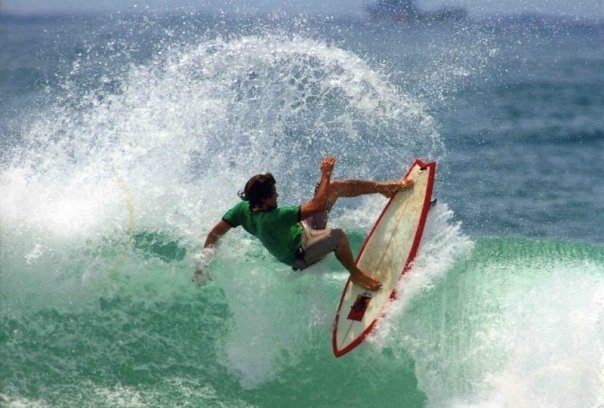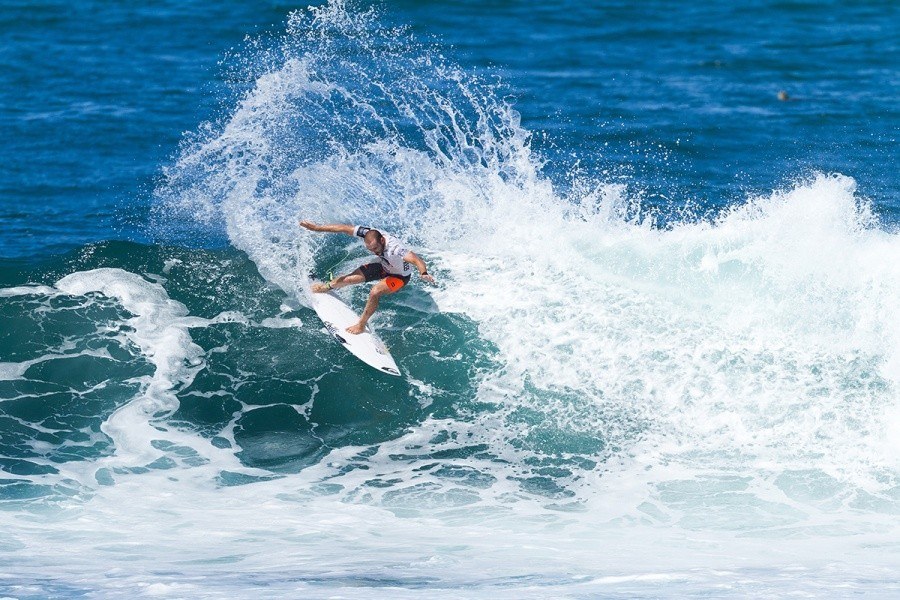Take a seat and enjoy a lesson on surfing in Portugal with our latest article that chronicles the history of wave riding in this ruggedly beautiful European surf destination.
Portugal enjoys a rich surf history that stretches back to the early 1920s. As opposed to large surfing nations such as Australia, the USA, Brazil, South Africa and even France though, the particulars of Portugal’s surfing heritage are still relatively unknown outside of its own borders. But this doesn’t mean that surfing in Portugal isn’t worth a mention, nor does it imply that the country has never excelled on the world stage.
On the contrary, Portugal boasts some of the best waves in the world and consistently churns out hordes of well-rounded surfers. With decorated individuals such as Pedro Lima, Tiago Pires, Joana Rocha and Nic Von Rupp all making a name for themselves one way or another over the last 50 plus years.
With this in mind, we thought we’d put together a brief history of surfing in Portugal. Complete with all the events and moments that shaped this country’s surfing psyche and made it the wave riding powerhouse it is today. So read on if you want to brush up on your knowledge about surfing in Portugal and familiarise yourself with the country’s ever-growing surf culture.
1926 – The first wave riders in Europe

France is widely considered to be the birthplace of surfing on continental Europe, when Peter Viertel and Georges Hennebutte started catching waves at Biarritz in the summer of 1956. What many people don’t know however is that there is evidence of people riding waves in Portugal as far back as 1926.
This evidence comes in the form of a 28-second black and white movie uncovered in the National Archive of Moving Images in Bucelas. It shows a group of men bodyboarding the whitewash at Leça da Palmeira near Porto. Using what appears to be surfboard-like crafts on a day when it looks like there was no shortage of swell.
1959 – The father of surfing in Portugal

Pedro Martins de Lima popularised surfing as a pastime in the country. He is therefore regarded as the pioneer of surfing in Portugal and known to be a legendary waterman. Sharing the ocean with Jacques Cousteau, bodysurfing back in 1946 with a pair of Churchill fins and finally standing up on a board in 1959. He’s clearly a man with a few stories to tell.
Now nearing his 90th birthday, Pedro continues to be a strong proponent of Portuguese surf culture and is actively involved in public relations with the brand Lightning Bolt. Not surprisingly given his life, Pedro has even been featured in a TV documentary about his exploits called, “The Wolf of the Sea”.
1987 – The birth of the national surf team

Once the Estado Novo regime fell, Portugal began opening its borders to new sports from other parts of the world. A decade or so later, surfing in Portugal had boomed and become incredibly popular amongst both the young and old. Resulting in the birth of the country’s very first National Surf Team.
The newly formed team then went on to represent Portugal at the Eurosurf European Surfing Championships held in France. Finishing in a respectable 4th place and earning the esteem of other surfing nations in the process. It also heralded in an era of competitive national surfing that would foster Portugal’s surfing stars of the 90s.
1988 – Portuguese Surfing Federation founded

With the country’s 4th place finish at the Eurosurf event in France, surfing in Portugal took off and surfers began to discuss the formation of a legitimate governing body. These discussions soon led to the establishment of the Portuguese Surfing Federation (Federação Portuguesa de Surf) or FPS.
Headquartered in Carcavelos, Cascais, the FPS is responsible for developing young surfers and helping them reach their competitive potential. It also handles the scheduling of the various competitions, disciplinary violations, judging, the training of athletes, environmental preservation and various other social responsibilities related to surfing in Portugal.
1989 – ASP World Tour event in Portugal

The ASP (Association of Surfing Professionals) World Tour is the original World Surf League. Founded by Ian Cairns in 1983, its goal was and still is to run competitions that feature the best surfers of their era competing at the most high-performance waves around the planet.
With that in mind, the ASP World Tour held its first-ever event in Portugal back in 1989. A comp that was won by Australian Rob Bain and watched by over 2,000 spectators on the beach. Not only was it a major success for the ASP, but the event also further solidified Portugal’s growing reputation as a country that was on the up and up in the world of surfing.
1991 – Inaugural national competition held with prize money

By now Portugal had already made its presence felt throughout the continent. The only thing left was to legitimize the national competition by adding prizes for podium surfers. So come 1991, the powers that be organized the very first national Portuguese surfing completion, with winners receiving a cash reward for placing.
The winner of this inaugural event was none other than Bruno “Bubba” Charneca, a local surfer from Capricia who has since become a national icon in Portugal. Thanks in part to his smooth style and famous determination when it comes to winning heats… no matter who is was surfing against.
1996 – WCT event in Portugal

In 1996 the World Championship Tour (also known as the World Surf League) ran the Coca Cola Figueira at Figueira da Foz. In attendance was the 3x world champion at the time, Kelly Slater, plus a number of other big names such as Shane Dorian, Matt Hoy, Rob Machado and Luke Egan.
Also making an appearance was the aforementioned surfer Bruno Charneca, who would surf against Slater in round 2 and eventually beat Slater. Becoming the first Portuguese surfer ever to eliminate the radical Floridian. Unfortunately, the fairytale would end there with Bruno losing to Sunny Garcia in the next round. With Matt Hoy winning the entire competition.
1998 – First female surf meeting takes place

In 1998 surfing in Portugal started to diversify. And beyond just having a strong national circuit for males, female surfers started sharing the lineup as well. This culminated in the development of Portugal’s first female professional surfer, Joana Rocha, who would go on to organize meetups for female surfers only.
This move not only helped Rocha monitor the state of surfing when it comes to women’s participation, it also gave Portugal’s 125 female surfers at that time the confidence to grow. These days there are over 450 female surfers in Portugal, with these numbers increasing every year. Thanks to Joana Rocha taking those first steps back in 1998.
2007 – Portugal’s maiden WCT surfer

Portugal’s maiden World Championship Tour surfer was Tiago “Saca” Pires, who beat out a host of other up and coming surfers from around the world to find himself sitting 5th place on the World Qualifying Series leaderboard in 2007. A ranking that then allowed him to compete in the World Championship Tour throughout the year.
Tiago would go on to finish 31st on the WCT and requalify through his accumulated WQS points. He then proceeded to better his ranking in 2009 and 2010, finishing up the year at a career-high placing of 21st. A knee injury in 2013 halted any momentum he had built up and after the 2015 WQS, Tiago called it quits.
2011 – Ericiera becomes a World Surfing Reserve

Ericeira is the epicenter of surfing in Portugal. Regarded as a place where surf culture influences the environment, the economy, and the community. To the point that the Save The Waves organization decided to make it a World Surfing Reserve in 2011. Thereby designating and preserving the quality waves, surf zones, and the surrounding area.
The Surfing Reserve covers an area of 4 kilometers and includes Pedra Branca, Reef, Ribeira d’Ilhas, Cave, Crazy Left, Coxos and São Lourenço. Ericeira is now one of 11 World Surfing Reserves around the world. Joining a list that features such prominent surf destinations as Punta de Lobos in Chile, Manly Beach in Australia and Malibu in the United States of America, among others.
2014 – First Portuguese junior world champion in surfing

The Portuguese competitive surf scene got another notch in its belt when Cascais Junior Vasco Riberio became the country’s first junior world champion. Beating out current World Surf League competitor Italo Ferreira in highly contestable waves at Ribeira D’Ilhas in Ericeira.
With this win, another chapter was written into the story that is surfing in Portugal. But what makes this feat even more impressive from an individual standpoint is that Vasco also took out his third national title and the European junior title in the same year. Making 2014 a year to remember for this stylish regular-footer from Cascais and furthering Portugal’s claim as a top tier surf nation.
2017 – Biggest wave ever ridden at Nazaré

Located just north of Lisbon, Nazaré is a break that probably doesn’t require an introduction. Consistently breaking at heights of 50 foot plus over the winter swell season, it is the ultimate proving ground for big wave surfers around the world. So when a massive swell was forecast for November 2017, Brazilian surfer Rodrigo Koxa knew he had to be there.
Upon finally getting his shot to surf Nazaré, Koxa wasted no time and eventually caught the biggest documented wave of the day – an incredible 80-foot monster. His wave beat the previous record of 78 feet held by Garrett McNamara also at Nazaré back in 2011. Koxa then went on to win the award for the biggest wave in the world at the Big Wave Surf Awards in 2018.


